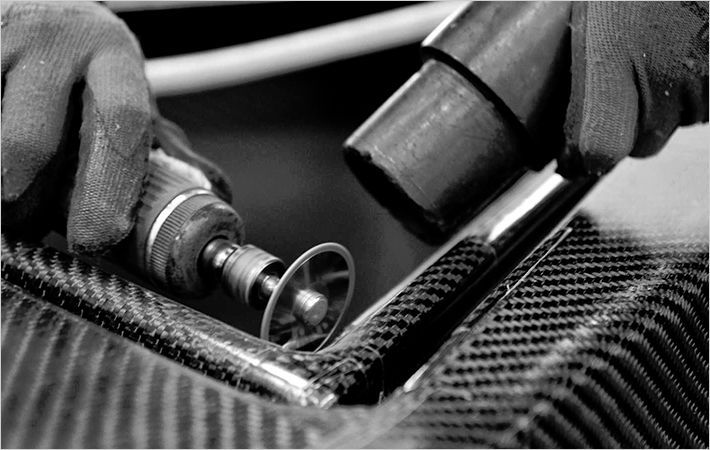Back windshields (backlites) present significant opportunity to take full advantage of the many benefits made possible by PC glazing, including weight-out, greater freedom to design stylish, aerodynamic parts; and greater integration of functions.
Turning to the Future
A second cutting-edge application on display is an all-plastic steering wheel prototype based on SABIC’s LEXAN EXL resin, a high performance PC copolymer with excellent high and low temperature strength, stiffness and high impact properties. Using a thermoplastic injection molding process for this part can save up to 20 percent in weight and 10 to 20 percent in lower component costs.
Mass savings mean automakers have more packaging space for integration of electronic components and greater design freedom to explore unique shapes and innovative aesthetics. Compared to the traditional die-casting process, injection molding can avoid secondary operations and streamline production, while reducing energy use and greenhouse gas emissions from the manufacturing process by up to 80 percent and 90 percent respectively.
Bumper-to-Bumper Solutions
Additional applications featured at SABIC’s SAE Brasil Congress stand include:
- A fender and fuel filler door molded from lightweight NORYL GTX resin. This material, when replacing metal, can save up to 50 percent in weight, while allowing for greater design and styling freedom. Fenders molded out of this material can be online painted along with the metal Body-In-White (BIW), avoiding the need for secondary operations and ensuring a perfect color match. This conductive resin does not require a primer step prior to painting.
- A front-end module molded out of STAMAX long glass fiber polypropylene, which offers weight savings, good thermal resistance and mechanical performance, as well as the ability to consolidate parts for streamlined assembly.
- Headlamp bezels and lighting components molded out of crystal clear, impact resistant LEXAN resin, one of the world’s leading material solutions for headlamp lens materials. The ULTEM resin is also highlighted for lighting applications because of its high heat properties and dimensional stability, properties which make the material an excellent candidate for advanced LED headlamp designs.
- Pedestrian energy absorbers based on XENOY IQ resin, an environmentally progressive material with a significant percentage of up-cycled post-consumer waste such as polyethylene terephthalate (PET) water bottles. In addition to weight savings for improved fuel efficiency and fewer emissions, this material provides efficient energy-absorption countermeasures to meet pedestrian protection and low-speed vehicle damageability requirements.
SABIC’s Innovative Plastics business works collaboratively with customers from the earliest stages of the design process to ensure the optimum match between material attributes and application requirements for the best overall performance. Dedicated local teams in Brazil, connected to and supported by SABIC’s global innovation and technology network, are available to deliver development assistance and technical support.
SABIC provides customers in South America with fast and easy access to materials from its manufacturing facilities in Campinas, Brazil and Tortuguitas, Argentina.
Saudi Basic Industries Corporation (SABIC)

